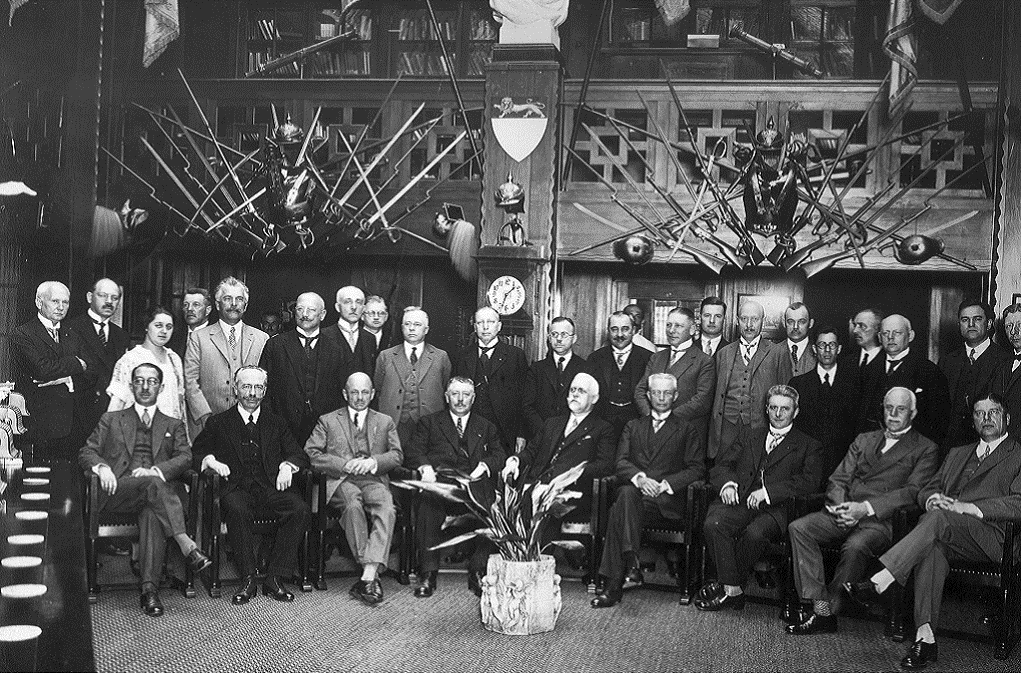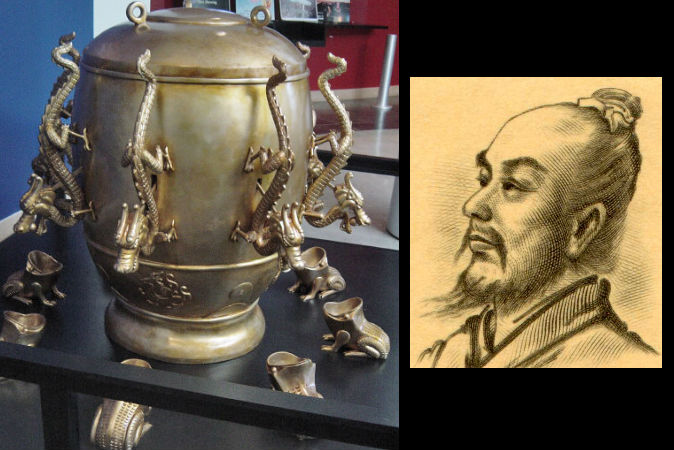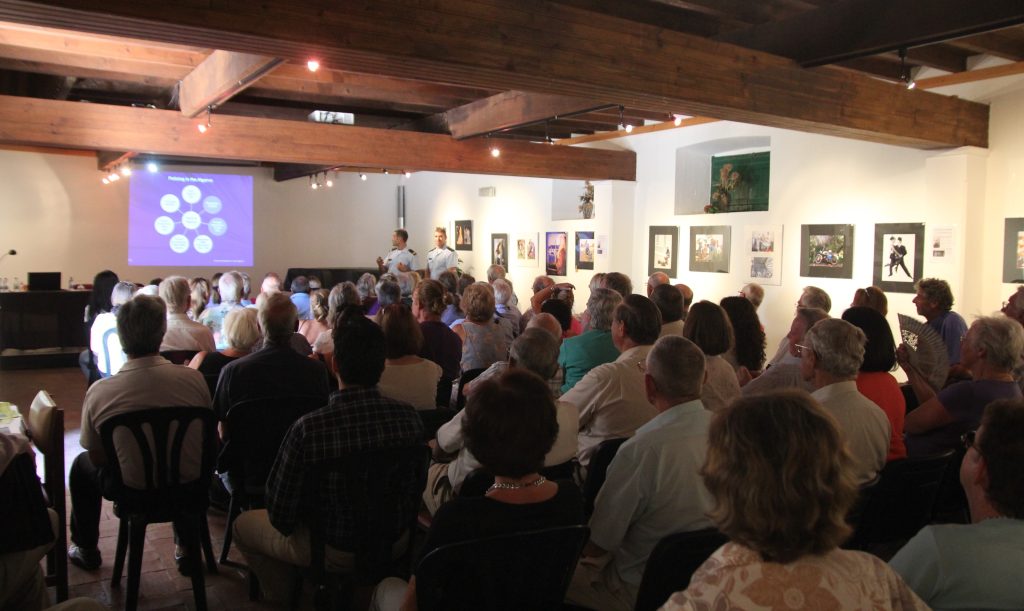Water from the dams only lasts eight months

Article by: Manuel Catarino (DN) 30th December 2023
“Beneath the exhausted dams, the dry irrigation canals and the citrus and avocado orchards, rivers and streams flow, forming considerable masses of water stored between the rocks. The Algarve has 17 underground aquifers. “They are real [dams in] Alqueva beneath our feet”, according to hydrologist José Paulo Monteiro, which will supply the public network when the dams are exhausted. But these strategic reserves are also becoming “critical”
In the North and Center of the country, where the rains of late October and early November had arrived to fill six reservoirs, it rained heavily again in December. The Serra Serrada and Vilar-Tabuaço dams, in the Douro, the Lagoa Comprida dam, in the Mondego, the Belver, Capinha and Cova de Viriato dams, in the Tagus, all already full of water and satiated, opened floodgates to let the excess flow out. – while in the Algarve the rain in drops was not even enough to wet the six dams in the region, which continue to hang out and pant with thirst.
The Algarve dams — Bravura, Odelouca, Arade and Funcho, in Barlavento; Odeleite and Beliche, in Sotavento — are less than a quarter of capacity, according to reports from the Portuguese Environment Agency (APA). Together they will have no more than 34 cubic hectometers of water, the equivalent of 34 billion litres. It even seems like an immense and inexhaustible sea. But it’s a puddle — a small puddle for tap needs. “It’s enough to supply the public network for about eight months”, says Professor Nuno Loureiro, researcher at the University of Faro, to Diário de Notícias (DN). .
The Municipality of Silves, with three thousand hectares of irrigated land, provides land for most of the Algarve’s orange groves. Around 150 thousand tons of oranges leave here annually, half of the Algarve’s entire production — and the Algarve, according to the National Statistics Institute, contributes almost 90 percent of the total 350 thousand tons for the entire country. Orchards need sun and can’t do without drinking it. They do not lack heat, but water is increasingly scarce.
João Garcia, president of the irrigators association, looks at the green orchards with fear of what may be to come. You don’t have to be a wizard to guess the doom of the drought. The sky clear of clouds and the smiling sun do not bode well. There was a time when it rained more in the Barlavento Algarve, from Sagres to Albufeira, and less in the Sotavento, from Loulé to Vila Real de Santo António. Now, it’s the opposite. At the end of November, blessed battles fell to Sotavento and shameful drops to Windward. The Odelouca and Arade dams, where the water that irrigates the Silves and Lagoa orchards comes from, remained low — so empty that the Portuguese Environment Agency decided to suspend irrigation. Not a drop comes from it for agriculture. The priority is to protect public supply.
Each hectare of orange grove, the equivalent of a football field, requires between six thousand and 6500 cubic meters of water per year — six or 6.5 million liters, from January to December. Irrigation has been so sparing that, this year, the production of oranges of the spring and summer varieties — Lane Late, Valencia and Dom João — fell by half. “There are orchards that have already lost many orange trees. The trees withered and died. Others, fed by boreholes, are on a survival basis: they receive only the water necessary so that the trees do not die, although they produce little or nothing, in the hope that it will rain and they can be recovered”, says João Garcia.
The irrigation workers in Silves still managed to water until the end of November. In the neighbouring Municipality of Lagos, in the Odiáxere area, water is an old memory. For three years now, the beneficiaries of the Bravura Dam — some 1800 hectares of irrigated land — have not had a drop of water running in the irrigation canals. The dam’s reservoir looks like the bottom of a pond and its banks are now authentic arid and stony ravines. The water stored below, so little that it can only be removed with a suction pump, is destined for the public network.
The rains in October, the result of depressions Aline and Bernard, were encouraging. They hit hard. But they passed quickly. They left as quickly as they arrived. No more than 100 thousand cubic meters (100 million liters) of water were left in the Bravura dam. “It was enough for two weeks of public supply,” says the president of the irrigation association, António Marreiros. Not a drop of this water was used for irrigation. The orange orchards have survived the headquarters thanks to two boreholes, opened in the Torre area, lent by the Portimão City Council.
The landscape around the Bravura irrigation canals is changing. Traditional orange groves are quickly being replaced by a new permanent crop – avocados. The plantations, watered from boreholes to underground aquifers, extend from Odiáxere to the municipality of Vila do Bispo. These are trees hated by environmentalists. They point out a mortal sin: they drink a lot of water — water that the Algarve doesn’t have. It’s more fame than profit.
Macário Correia, who the country knew as a committed Secretary of State for the Environment, is an agronomist by training and a farmer. Avocado trees don’t keep you up at night. “It’s not true that they consume as much water as they say,” he assures. They drink, at most, “10 percent more than a citrus grove”, between 6.6 million and seven million liters per hectare per year. More drops, less drops. The tendency is for them to drink less and less water. The University of Algarve, in collaboration with the Regional Directorate of Agriculture, is carrying out a study to promote more efficient irrigation of irrigated crop orchards.
But the avocado tree drinkers have an advantage: they give more income to farmers. The market, according to Macário Correia, “is paying producers for oranges at an average of 20 cents per kilo and for avocados at around two euros”. He focuses on citrus fruits — oranges, tangerines and lemons — and carob. Not a single avocado comes from his family land, on the outskirts of Tavira. But land with this fruit is growing in the Algarve. They extend over 2600 hectares, according to figures from the Regional Directorate of Agriculture, and already represent eight percent of the entire agricultural area in the region. The business seems worthwhile. A study commissioned by the Algarve Business Union shows that current avocado plantations, when they reach production splendor, will generate 40 million euros for the region.
The Algarve’s Gross Domestic Product, according to data from the Regional Coordination and Development Commission, is around 10 billion euros. The biggest contribution comes from tourism. Agriculture is worth around nine percent of wealth: around 900 million euros. It occupies around 32,500 hectares, much of it with citrus fruits, apples, pears, avocados — orchards that require water. The dams are exhausted. Even the Sotavento irrigated areas, eight thousand hectares served by the Odeleite and Beliche dams, ran out of water at the beginning of December. “There is no water to start next year’s campaign”, laments Macário Correia, president of the irrigation association.
Farmers, lacking surface water, resort to underground water. 6765 water intakes are licensed throughout the Algarve, including boreholes, wells and noras, according to the National Water Resources Information System. But no one knows how many illegal boreholes there are. José Paulo Monteiro, hydrologist, professor at the Centre for Water Sciences and Technologies at the University of Faro, calculates that “there are between 20 thousand and 25 thousand boreholes in the Algarve, a region with an area of 5400Km2”.
Nuno Loureiro, researcher at the University of Faro, demands “planning and supervision” to prevent “everyone from doing what they want with a scarce good that belongs to everyone”. It won’t be difficult to monitor and put order in the holes. Satellite images, which observe everything, can help.
Nuno Loureiro knows, like few others, the Algarve from space. He is working on building a modern map that should be completed next February. We will then see, down to the smallest millimeter, what the true extent of irrigation in the Algarve is. Satellites have been showing you “an addition” of areas irrigated over time: “The images from the 80s of the last century show how small the citrus fruit patch is in the Silves area and how modest the entire area is to the north and south of Estrada Nacional 125, between Tavira and Vila Real de Santo António. If we look for recent images, from the years 2018, 2020, 2022, we can see that it grows more and more and is watered more and more.” Green is not deceiving. You can see if vegetation is being watered — and this information, crossed with possible water sources, is enough to detect illegal boreholes.
This method of satellite mapping, according to Nuno Loureiro, “allows monitoring the use of water, but it is not being used by political and technical decision-makers, and it needs to start being done”. Even if this winter is a little more generous with rain, this “may alleviate the pain, but it is not a cure”; to the problem that the region faces – and the problem, sums up the scientist, is pointed: “The Algarve consumes more water than it has available.”
Beneath our feet, beneath the exhausted dams and dry irrigation canals, rivers and streams flow, forming considerable masses of water stored among the rocks. The Algarve has 17 underground aquifers — “they are real [dams of] Alqueva”, hydrologist José Paulo Monteiro tells DN. But these strategic reserves “are becoming critical”, because drought and lack of precipitation are preventing them from being recharged. The most important — delimited by Querença, in the Municipality of Loulé, Faro and Silves — has already experienced a “recharge capacity of the order of three million cubic meters per year”. It was time. The water level is dropping so much that salty sea water has already started to infiltrate. The others are no better. What is located in the depths of the earth between Almádena and Odiáxere is saved. Nature trapped him between rocks and cut off his path to the coast.
The Algarve consumes an average of 237 cubic hectometers of water per year, the equivalent of 237 billion liters. More than half, almost 129 hectometers, comes from aquifers — water that is used for everything: public supply, rule of orchards and golf courses, filling of swimming pools… “These reserves are going into the red”, warns the professor Nuno Loureiro.
Nuno Loureiro is only sure of one thing: the Algarve is desertifying – and “I don’t see long-term plans, a solution designed to know where we will get water in 20 years”. Everything goes slowly. The construction of a single desalination plant, as planned, is not enough: “Two or three are needed.”
If desalination is like the airport story, the Algarve will die of thirst. Unless São Pedro sends rain in buckets that fill dams and recharge aquifers. Otherwise, it will be necessary to go to underground reserves, the “Alquevas beneath our feet”, so that there is no shortage of water in the taps”.






 A seismograph is an instrument that detects and measures the motions of the ground as a result of seismic waves gushing from an earthquake, volcanic eruption or powerful explosion.
A seismograph is an instrument that detects and measures the motions of the ground as a result of seismic waves gushing from an earthquake, volcanic eruption or powerful explosion.